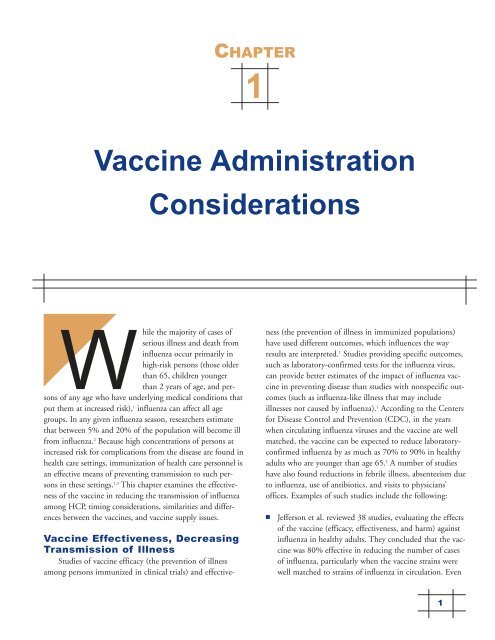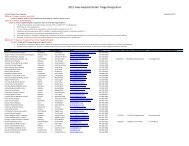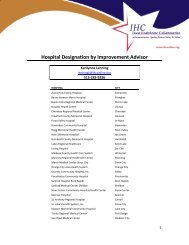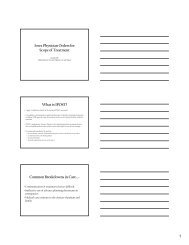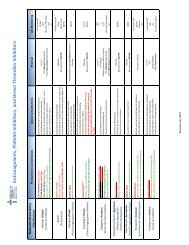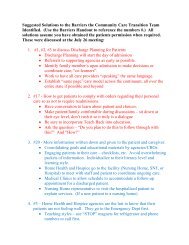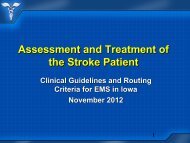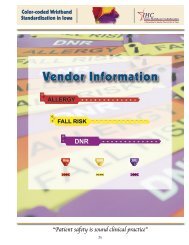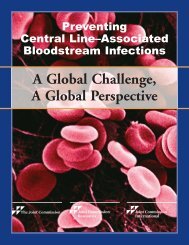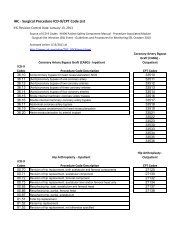Providing a Safer Environment for Health Care Personnel & Patients ...
Providing a Safer Environment for Health Care Personnel & Patients ...
Providing a Safer Environment for Health Care Personnel & Patients ...
You also want an ePaper? Increase the reach of your titles
YUMPU automatically turns print PDFs into web optimized ePapers that Google loves.
CHAPTER<br />
1<br />
Vaccine Administration<br />
Considerations<br />
While the majority of cases of<br />
serious illness and death from<br />
influenza occur primarily in<br />
high-risk persons (those older<br />
than 65, children younger<br />
than 2 years of age, and persons<br />
of any age who have underlying medical conditions that<br />
put them at increased risk), 1 influenza can affect all age<br />
groups. In any given influenza season, researchers estimate<br />
that between 5% and 20% of the population will become ill<br />
from influenza. 2 Because high concentrations of persons at<br />
increased risk <strong>for</strong> complications from the disease are found in<br />
health care settings, immunization of health care personnel is<br />
an effective means of preventing transmission to such persons<br />
in these settings. 1,3 This chapter examines the effectiveness<br />
of the vaccine in reducing the transmission of influenza<br />
among HCP, timing considerations, similarities and differences<br />
between the vaccines, and vaccine supply issues.<br />
Vaccine Effectiveness, Decreasing<br />
Transmission of Illness<br />
Studies of vaccine efficacy (the prevention of illness<br />
among persons immunized in clinical trials) and effectiveness<br />
(the prevention of illness in immunized populations)<br />
have used different outcomes, which influences the way<br />
results are interpreted. 1 Studies providing specific outcomes,<br />
such as laboratory-confirmed tests <strong>for</strong> the influenza virus,<br />
can provide better estimates of the impact of influenza vaccine<br />
in preventing disease than studies with nonspecific outcomes<br />
(such as influenza-like illness that may include<br />
illnesses not caused by influenza). 1 According to the Centers<br />
<strong>for</strong> Disease Control and Prevention (CDC), in the years<br />
when circulating influenza viruses and the vaccine are well<br />
matched, the vaccine can be expected to reduce laboratoryconfirmed<br />
influenza by as much as 70% to 90% in healthy<br />
adults who are younger than age 65. 1 A number of studies<br />
have also found reductions in febrile illness, absenteeism due<br />
to influenza, use of antibiotics, and visits to physicians’<br />
offices. Examples of such studies include the following:<br />
■<br />
Jefferson et al. reviewed 38 studies, evaluating the effects<br />
of the vaccine (efficacy, effectiveness, and harm) against<br />
influenza in healthy adults. They concluded that the vaccine<br />
was 80% effective in reducing the number of cases<br />
of influenza, particularly when the vaccine strains were<br />
well matched to strains of influenza in circulation. Even<br />
1


